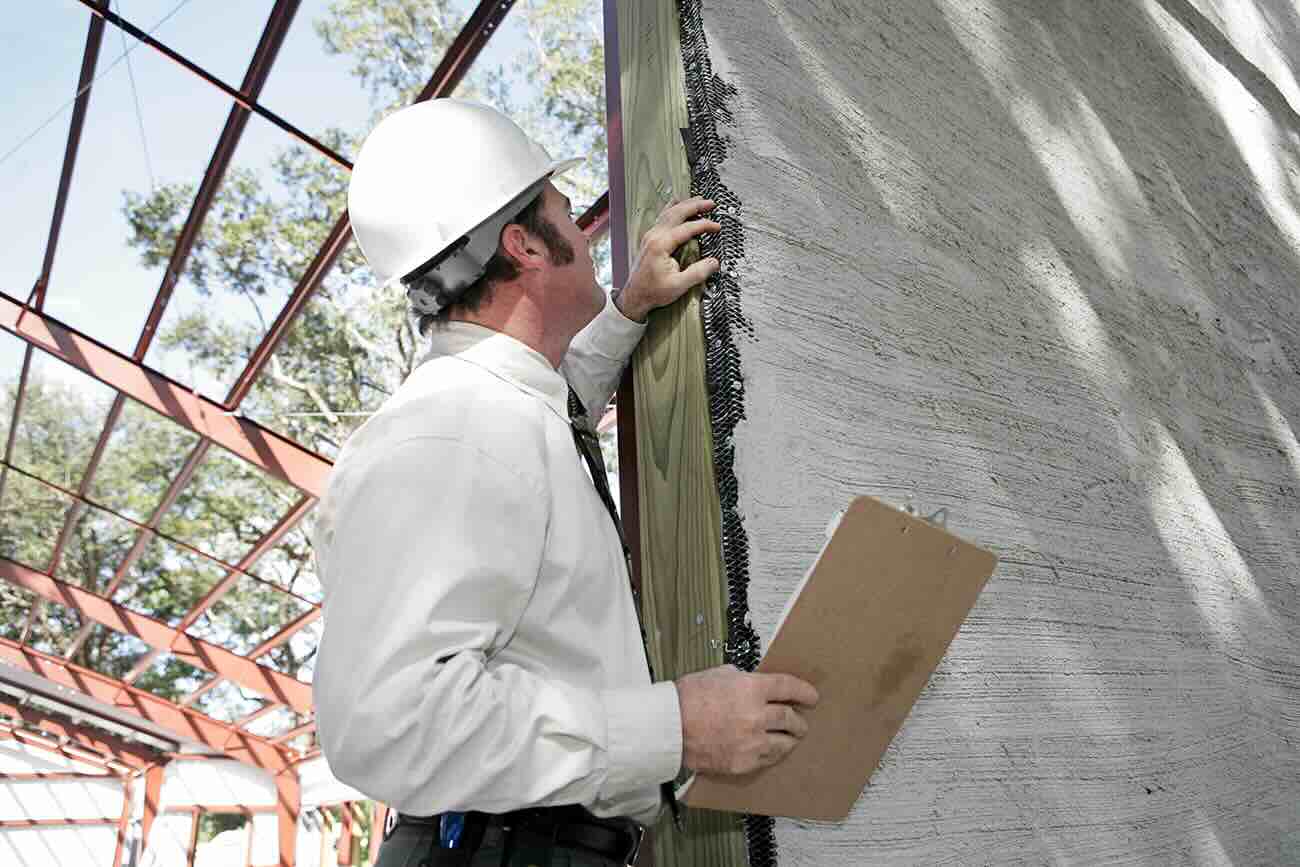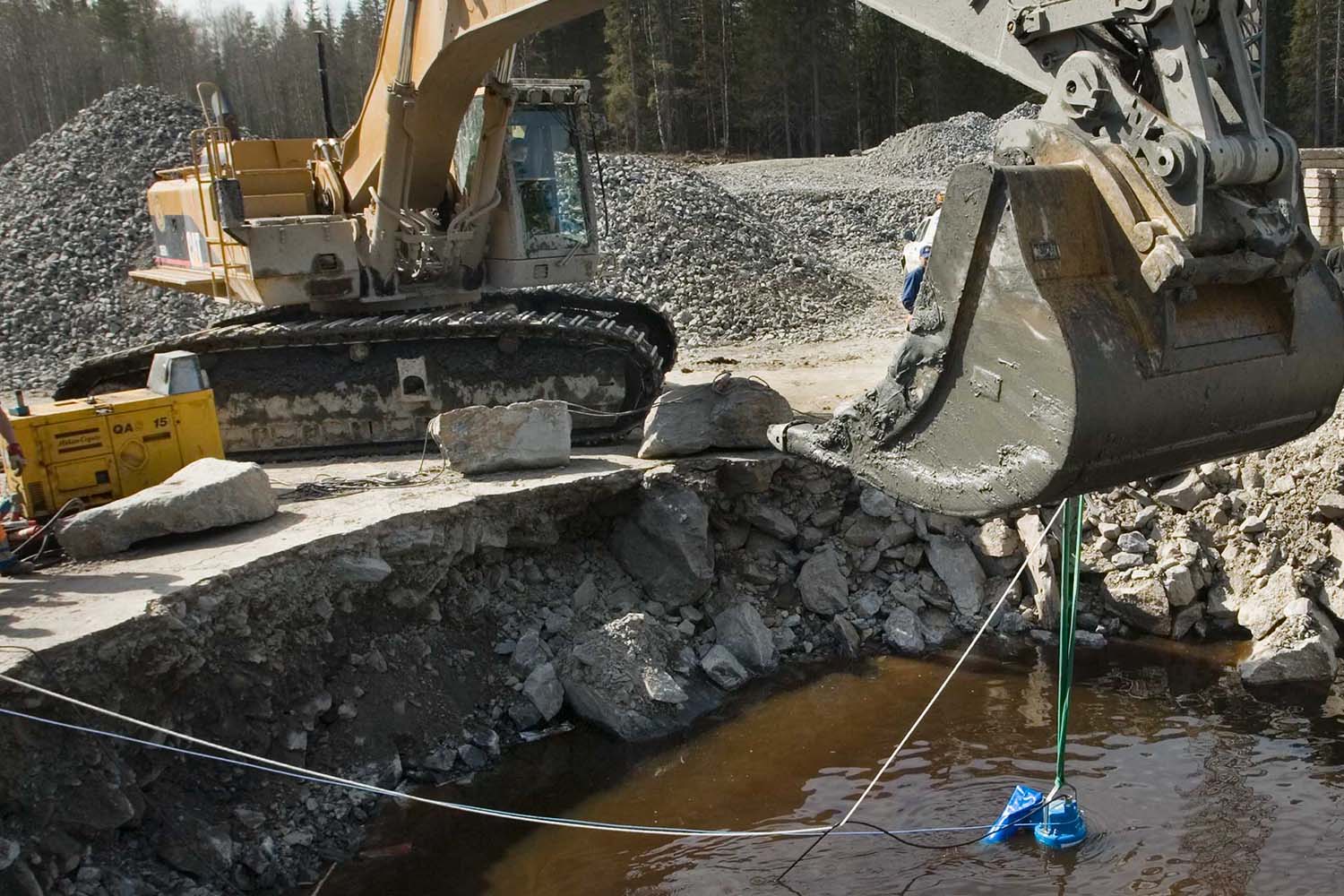Home>diy>Building & Construction>What Is Construction Chemicals


Building & Construction
What Is Construction Chemicals
Modified: December 7, 2023
Learn about the role of construction chemicals in building construction. Discover how these chemicals enhance durability and strength in construction projects.
(Many of the links in this article redirect to a specific reviewed product. Your purchase of these products through affiliate links helps to generate commission for Storables.com, at no extra cost. Learn more)
Introduction
Welcome to the world of construction chemicals, where science meets construction to create stronger, more durable and aesthetically pleasing buildings. In the field of construction, the use of specialized chemical products has become essential for achieving optimal results in various applications. From enhancing the strength of concrete to protecting structures from corrosion, construction chemicals play a vital role in ensuring the longevity and sustainability of buildings.
Construction chemicals, also known as specialty chemicals or building chemicals, encompass a wide range of products specifically formulated to enhance the performance and durability of construction materials. These chemicals are designed to improve the overall quality of construction projects, providing additional properties and functionalities that cannot be achieved by using regular building materials alone.
In this article, we will delve into the world of construction chemicals, exploring their different types, applications, benefits, and the challenges associated with their usage. We will also discuss the importance of regulations and standards in ensuring the safe and effective use of construction chemicals.
So, let’s dive in and discover the fascinating world of construction chemicals, where innovation and science combine to shape the future of building construction.
Key Takeaways:
- Construction chemicals are essential for enhancing the performance, durability, and aesthetics of buildings, offering benefits such as improved structural integrity, cost savings, and sustainable construction practices.
- While construction chemicals bring numerous advantages, it’s crucial to address challenges such as health and safety hazards, environmental impact, and regulatory compliance to ensure their safe and effective use in construction projects.
Read more: What Is Construction
Definition of Construction Chemicals
Construction chemicals can be defined as specialized chemical formulations that are used in various stages of the construction process to enhance the performance, durability, and aesthetics of buildings. These chemicals are specifically designed and manufactured to meet the demanding requirements of the construction industry.
Construction chemicals encompass a wide range of products, including admixtures, sealants, adhesives, waterproofing compounds, protective coatings, grouts, and more. Each type of construction chemical serves a specific purpose, catering to the unique challenges faced in different construction applications.
Admixtures, for example, are chemical agents added to concrete or mortar mixes to modify their properties and improve workability, strength, setting time, durability, and other desired characteristics. These admixtures can be categorized into different types, such as plasticizers, superplasticizers, accelerators, retarders, air-entraining agents, and waterproofing admixtures.
Sealants and adhesives are another important category of construction chemicals. Sealants are used to fill gaps and joints, preventing the infiltration of water, air, and other contaminants. Adhesives, on the other hand, are used to bond different construction materials together, providing structural strength and integrity.
Waterproofing compounds play a significant role in protecting structures from water damage. These chemicals create a barrier against water penetration, preventing moisture-related issues such as dampness, seepage, and mold growth. Waterproofing compounds can be applied to various surfaces, including roofs, basements, swimming pools, and balconies.
Protective coatings, such as paints, varnishes, and anti-corrosion coatings, are used to safeguard surfaces from environmental factors, chemical attack, UV rays, and wear and tear. These coatings not only enhance the appearance of buildings but also extend their lifespan by providing a protective layer.
Grouts are specialized construction chemicals used for filling gaps, voids, and cracks in structures. They provide structural stability, prevent the ingress of contaminants, and act as a bonding agent between elements.
Overall, construction chemicals are essential tools for builders, designers, architects, and contractors. They offer innovative solutions to address specific construction challenges, improve the quality and efficiency of construction projects, and ensure the long-term performance and durability of buildings.
Common Types of Construction Chemicals
Construction chemicals encompass a diverse range of products, each serving a specific purpose in the building construction process. Here are some of the most common types of construction chemicals:
- Admixtures: Admixtures are chemical formulations added to concrete, mortar, or cementitious mixes to enhance their properties. They can include plasticizers, superplasticizers, accelerators, retarders, air-entraining agents, and waterproofing admixtures. Admixtures help improve workability, reduce water content, enhance strength, control setting time, and provide other desired properties to concrete or mortar.
- Sealants: Sealants are materials used to seal joints, gaps, or cracks in various construction materials. They prevent the infiltration of water, air, dust, or contaminants, ensuring the integrity and durability of a structure. Sealants are commonly used in areas such as windows, doors, expansion joints, sanitary fittings, and roofing.
- Adhesives: Adhesives are substances that bond two or more materials together. They are used in various construction applications, such as installing tiles, fixing panels, or bonding different substrates. Adhesives provide structural strength, flexibility, and durability while allowing for easy installation and maintenance of building components.
- Waterproofing Compounds: Waterproofing compounds are used to protect structures from water ingress and moisture-related issues. They create a barrier that prevents water penetration, preventing problems such as dampness, leakage, and mold growth. Waterproofing compounds are commonly applied on roofs, basements, balconies, and other areas prone to water exposure.
- Protective Coatings: Protective coatings are applied to surfaces to protect them from external factors, such as corrosion, UV rays, chemical attack, or wear and tear. These coatings can be in the form of paints, varnishes, anti-corrosion coatings, and fire-resistant coatings. They not only enhance the aesthetics of the building but also extend its lifespan by providing a protective layer.
- Grouts: Grouts are flowable materials used to fill gaps, voids, or cracks in structures. They provide structural stability, prevent the ingress of contaminants, and improve the overall integrity of a building. Grouts are commonly used in applications such as tile grouting, anchor fixing, and repairing concrete structures.
These are just a few examples of the common types of construction chemicals. There are many other specialized chemical products available, each catering to different construction needs and challenges. The choice of construction chemicals depends on the specific requirements of the project, the type of construction material being used, and the desired performance goals.
Importance of Construction Chemicals in the Construction Industry
Construction chemicals play a crucial role in the construction industry, bringing numerous benefits and advantages to both the construction process and the final outcome of a building project. Here are some key reasons why construction chemicals are important:
Enhanced Performance:
Construction chemicals are designed to improve the performance of construction materials and systems. They can enhance the strength, durability, workability, and setting time of concrete and mortar, making them more suitable for various applications. By incorporating construction chemicals into the mix, builders can achieve higher quality construction and ensure the long-term performance of structures.
Read more: What Is Retrofit In Construction
Improved Durability:
Construction chemicals help protect buildings from external factors that can lead to deterioration, such as moisture, corrosion, UV rays, and chemical attack. Waterproofing compounds, protective coatings, and anti-corrosion products create a barrier that prevents water ingress and damage, extending the lifespan of structures and reducing maintenance costs over time.
Increased Safety and Structural Integrity:
Construction chemicals contribute to the safety and stability of buildings. Adhesives, sealants, and grouts provide strong bonding and structural stability, ensuring that building components are securely held in place. This enhances the overall safety of the structure and reduces the risk of accidents or structural failures.
Construction Efficiency and Cost Savings:
Construction chemicals can improve the efficiency and speed of construction projects. Admixtures, for example, can optimize concrete workability and reduce the need for excessive water, leading to faster construction and reduced curing time. Additionally, the use of specialized construction chemicals can minimize the need for repairs or replacements in the future, resulting in cost savings over the lifetime of the building.
Aesthetics and Building Design Flexibility:
Construction chemicals, such as decorative coatings and finishes, allow for greater creativity in building design. These chemicals offer a wide range of colors, textures, and finishes, enabling architects and designers to achieve desired aesthetics and create visually appealing buildings.
Read more: What Is Stucco In Construction
Sustainability and Environmental Benefits:
Many construction chemicals are formulated with sustainability in mind. They can contribute to energy efficiency, improve indoor air quality, and reduce environmental impact. For example, the use of green or eco-friendly construction chemicals can help minimize harmful emissions and promote a healthier living environment.
Overall, construction chemicals are indispensable in the construction industry. They bring numerous advantages, including improved performance, increased durability, enhanced safety, construction efficiency, design flexibility, and sustainability. By utilizing the right construction chemicals, builders can optimize construction processes, ensure the longevity of structures, and deliver high-quality buildings that meet the demands of modern construction standards.
Application Areas of Construction Chemicals
Construction chemicals find applications in various stages of the building construction process, addressing specific needs and challenges in different areas. Here are some common application areas where construction chemicals are used:
Concrete and Mortar:
Construction chemicals are extensively used in concrete and mortar mixes to enhance their properties and performance. Admixtures, such as plasticizers, superplasticizers, accelerators, and retarders, are added to improve workability, strength, setting time, and durability of concrete. Waterproofing admixtures are used to make concrete more resistant to water penetration. Construction chemicals also play a role in concrete repairs and rehabilitation, ensuring the structural integrity of existing concrete elements.
Waterproofing:
Waterproofing is a critical application area for construction chemicals. Waterproofing compounds, such as coatings, membranes, and sealants, are applied to various surfaces to prevent the ingress of water and protect structures from moisture-related issues. They are commonly used on roofs, basements, balconies, swimming pools, and bathrooms to create a protective barrier against water infiltration and dampness.
Read more: What Is Siding In Construction
Sealants and Adhesives:
Construction chemicals are used as sealants and adhesives to ensure the integrity and stability of building components. Sealants are applied to fill gaps, joints, or cracks in various materials, preventing the infiltration of water, air, dust, or contaminants. They are used in windows, doors, expansion joints, sanitary fittings, and roofing applications. Adhesives, on the other hand, are used to bond different construction materials together, providing structural strength and stability.
Protective Coatings:
Protective coatings are a vital application of construction chemicals. They are applied to surfaces to protect them from environmental factors, such as corrosion, UV rays, chemical attack, and wear and tear. These coatings can be in the form of paints, varnishes, anti-corrosion coatings, and fire-resistant coatings. They not only enhance the appearance of buildings but also extend the lifespan of structures by providing a protective layer.
Grouting and Anchoring:
Grouts play a significant role in construction, used to fill gaps, voids, or cracks in structures. They provide structural stability, improve load transfer, and prevent the ingress of water or contaminants. Grouts are commonly used in applications such as tile grouting, anchor fixing, and repairing concrete structures.
Repair and Rehabilitation:
Construction chemicals are also utilized in the repair and rehabilitation of existing structures. This includes the repair of damaged concrete elements, such as foundations, columns, and beams, using specialized repair mortars and corrosion inhibitors. Construction chemicals help restore the structural integrity of aging or damaged buildings, prolonging their lifespan.
These are just a few examples of the application areas of construction chemicals. The versatility of these chemicals allows them to be used in various construction processes, ensuring the performance, durability, and longevity of buildings across different sectors, including residential, commercial, industrial, and infrastructure.
Read more: What Is A PCI In Construction
Benefits of Using Construction Chemicals
The use of construction chemicals in the building construction process brings several benefits and advantages. These chemicals are specifically formulated to enhance the performance and durability of construction materials, resulting in improved quality and longevity of structures. Here are some key benefits of using construction chemicals:
Enhanced Performance:
Construction chemicals are designed to improve the performance of construction materials, such as concrete, mortar, and coatings. Admixtures, for example, can optimize the workability, strength, setting time, and durability of concrete, making it more suitable for various applications. This allows builders to achieve desired performance characteristics, ensuring the structural integrity and longevity of buildings.
Increased Durability:
Construction chemicals help protect structures from external factors that can lead to deterioration and damage. Waterproofing compounds create a barrier that prevents water penetration, protecting buildings from moisture-related issues such as dampness, leakage, and mold growth. Additionally, protective coatings safeguard surfaces from corrosion, UV rays, chemical attack, and wear and tear, enhancing the overall durability and lifespan of structures.
Improved Structural Integrity:
Construction chemicals, such as adhesives, sealants, and grouts, contribute to the structural integrity of buildings. These chemicals provide strong bonding and stability, ensuring that building components are securely held in place. They help strengthen connections, prevent water or air infiltration, and reduce the risk of structural failures or accidents, ultimately improving the safety and reliability of structures.
Read more: What Is Embankment In Construction
Cost Savings:
The use of construction chemicals can lead to cost savings in the long run. By enhancing the durability and performance of materials, construction chemicals reduce the need for frequent repairs, replacements, and maintenance. This translates into reduced maintenance costs and prolonged service life of buildings, resulting in significant savings over time.
Efficient Construction Processes:
Construction chemicals can improve the efficiency and speed of construction projects. Admixtures, for example, improve the workability and setting time of concrete, allowing for faster construction and reduced curing time. This results in shorter construction schedules, increased productivity, and improved project timelines.
Aesthetically Pleasing Designs:
Construction chemicals, such as decorative coatings and finishes, offer a wide range of colors, textures, and finishes, enabling architects and designers to achieve desired aesthetics and create visually appealing buildings. These chemicals allow for greater flexibility and creativity in building design, enhancing the overall visual appeal and uniqueness of structures.
Sustainable Construction:
Many construction chemicals are formulated with sustainability in mind. They contribute to energy efficiency, improve indoor air quality, and reduce environmental impact. For example, the use of eco-friendly construction chemicals can minimize harmful emissions and promote a healthier living environment.
Overall, the use of construction chemicals brings numerous benefits, including enhanced performance, increased durability, improved structural integrity, cost savings, efficient construction processes, aesthetic design options, and sustainable construction practices. These advantages make construction chemicals indispensable in the construction industry, ensuring the quality and longevity of buildings.
Read more: What Is Construction Budget
Challenges and Risks Associated with Construction Chemicals
While construction chemicals offer numerous benefits in the construction industry, it is important to be aware of the challenges and potential risks associated with their use. Here are some common challenges and risks that need to be considered:
Health and Safety Hazards:
Some construction chemicals may pose health and safety risks if not handled properly. Workers involved in the handling, application, or exposure to these chemicals should be trained on proper safety precautions, including the use of personal protective equipment (PPE) and the implementation of safety protocols. It is crucial to comply with safety guidelines and regulations to minimize the risks associated with construction chemicals.
Environmental Impact:
Certain construction chemicals can have adverse effects on the environment if not used or disposed of properly. Chemical pollutants can enter the soil, water bodies, and air, causing contamination and harm to ecosystems. It is important to follow proper disposal procedures and choose environmentally-friendly alternatives when possible, minimizing the impact on the environment.
Compatibility and Performance:
While construction chemicals are designed to enhance the performance of construction materials, it is essential to ensure they are compatible with the specific project requirements and materials being used. Incompatibility issues may lead to reduced effectiveness or even damage to the construction elements. Proper testing and evaluation should be conducted to determine the compatibility and performance of construction chemicals before their application.
Read more: What Is Stirrups In Construction
Quality and Reliability:
The quality and reliability of construction chemicals can vary among manufacturers and suppliers. It is crucial to source products from reputable suppliers who adhere to industry standards and have a track record of delivering high-quality construction chemicals. Ensuring product reliability is essential to achieve the desired results and avoid potential issues or failures in construction projects.
Regulatory Compliance:
Construction chemicals are subject to various regulations, codes, and standards that govern their manufacture, usage, and disposal. It is important to comply with these regulations to ensure the safe and effective use of construction chemicals. This may involve obtaining the necessary permits, certifications, and documentation, as well as staying updated on any changes in regulations or industry best practices.
Storage and Handling:
Proper storage and handling of construction chemicals are crucial to maintaining their efficacy and safety. Some chemicals may require specific storage conditions, such as appropriate temperature, ventilation, and segregation from incompatible materials. Handling precautions, including following proper mixing ratios, avoiding direct contact with skin or eyes, and using appropriate equipment, should be taken to minimize risks during application.
Long-Term Performance and Maintenance:
While construction chemicals can enhance the durability of structures, it is important to consider the long-term performance and maintenance requirements. Regular inspections, maintenance, and repairs may be necessary to ensure the continued effectiveness of the construction chemicals and to address any issues that may arise over time.
By being aware of these challenges and risks associated with construction chemicals, proactive measures can be taken to mitigate potential problems. Proper training, adherence to safety guidelines, careful selection of reliable suppliers, and compliance with regulations are among the steps that need to be taken to ensure the safe and effective use of construction chemicals in construction projects.
Read more: What Is A Fascia In Construction
Regulations and Standards for Construction Chemicals
Regulations and standards play a crucial role in ensuring the safe and effective use of construction chemicals in the building construction process. These regulations and standards are established by governmental bodies, industry organizations, and regulatory agencies to promote product safety, quality, and environmental responsibility. Here are some key aspects of regulations and standards for construction chemicals:
Product Testing and Certification:
Construction chemicals are subjected to rigorous testing and evaluation to assess their performance, quality, and compliance with industry standards. Independent testing laboratories conduct various tests, such as chemical composition analysis, physical properties assessment, and environmental impact evaluation. Products that meet the predefined standards and criteria are awarded certifications, verifying their safety and quality.
Labeling and Safety Data Sheets (SDS):
Construction chemicals are required to have proper labeling and safety data sheets (SDS) that provide essential information about the product, its potential hazards, safe handling procedures, and emergency response measures. This information helps users, such as contractors, applicators, and workers, to understand the proper usage, storage, and disposal of construction chemicals, promoting safety and preventing accidents or health risks.
Storage and Transportation Regulations:
Construction chemicals often have specific requirements for storage and transportation to ensure their stability and prevent potential hazards. Regulations may include guidelines for appropriate storage conditions, labeling of containers, segregation from incompatible materials, and the use of proper packaging and transportation methods to prevent leaks or spills during transit.
Read more: What Is LEED In Construction
Environmental Regulations:
Construction chemicals, like all chemical products, are subject to environmental regulations to minimize their impact on ecosystems and human health. Specific regulations may include guidelines on waste disposal, emission controls, and restrictions on the use of hazardous substances. Compliance with these regulations helps protect the environment and promotes sustainable construction practices.
International Standards:
Many international organizations, such as ASTM International, ISO (International Organization for Standardization), and BSI (British Standards Institution), have developed standards for construction chemicals. These standards provide guidance on the quality, performance, and safety requirements for specific types of construction chemicals. Adhering to international standards ensures that construction chemicals meet recognized benchmarks and are compatible with global construction practices.
Occupational Health and Safety Regulations:
Regulations related to occupational health and safety ensure the protection and well-being of workers handling construction chemicals. These regulations may cover aspects such as personal protective equipment (PPE) requirements, training and education on chemical handling, emergency response procedures, and risk assessment and management. Compliance with these regulations safeguards the health and safety of workers in the construction industry.
Building Codes and Regulations:
Building codes and regulations govern the overall construction process, including the selection and use of construction chemicals. These codes outline specific requirements and standards to ensure the safety, durability, and quality of buildings. Compliance with building codes ensures that construction chemicals are used in a manner that meets the established standards and contributes to the overall integrity of a structure.
Complying with regulations and standards for construction chemicals is crucial to ensure the safe and responsible use of these products. It is important for stakeholders, including manufacturers, suppliers, contractors, and end-users, to stay informed about the applicable regulations and standards and to incorporate them into their construction practices. This helps to maintain product quality, protect the environment, and promote the overall safety and sustainability of the construction industry.
Read more: What Are Piers In Construction
Conclusion
Construction chemicals play a vital role in the construction industry, offering a wide range of benefits and advantages. These specialized chemical formulations enhance the performance, durability, and aesthetics of construction materials, ensuring the longevity and sustainability of buildings. From improving the strength and workability of concrete to protecting structures from water damage and corrosion, construction chemicals have become indispensable tools in modern construction practices.
Throughout this article, we have explored the world of construction chemicals, covering their definition, common types, application areas, benefits, challenges, and regulations. We have seen how construction chemicals enhance the performance of concrete and mortar, provide waterproofing and sealing solutions, offer protective coatings, and contribute to the structural integrity of buildings. By utilizing construction chemicals, builders can achieve enhanced durability, increased safety, cost savings, improved construction efficiency, and aesthetically pleasing designs.
However, it is crucial to acknowledge the challenges and risks associated with construction chemicals. Health and safety hazards, environmental impact, compatibility and performance issues, regulatory compliance, and proper storage and handling are some factors that need to be considered to ensure the safe and effective use of construction chemicals in construction projects. By adopting proactive measures, adhering to regulations, and selecting high-quality and reliable products, the risks can be mitigated, promoting the responsible use of construction chemicals.
In conclusion, construction chemicals have revolutionized the construction industry, enabling builders to achieve higher quality, durability, and efficiency in their projects. These chemicals bring innovation, sustainability, and aesthetic appeal to building construction, helping shape the future of the industry. As construction practices continue to evolve, the importance of construction chemicals will only increase, contributing to the development of resilient and long-lasting structures.
Frequently Asked Questions about What Is Construction Chemicals
Was this page helpful?
At Storables.com, we guarantee accurate and reliable information. Our content, validated by Expert Board Contributors, is crafted following stringent Editorial Policies. We're committed to providing you with well-researched, expert-backed insights for all your informational needs.






0 thoughts on “What Is Construction Chemicals”